SOMETHING BEAUTIFUL
The Aldersgate UMC Blog
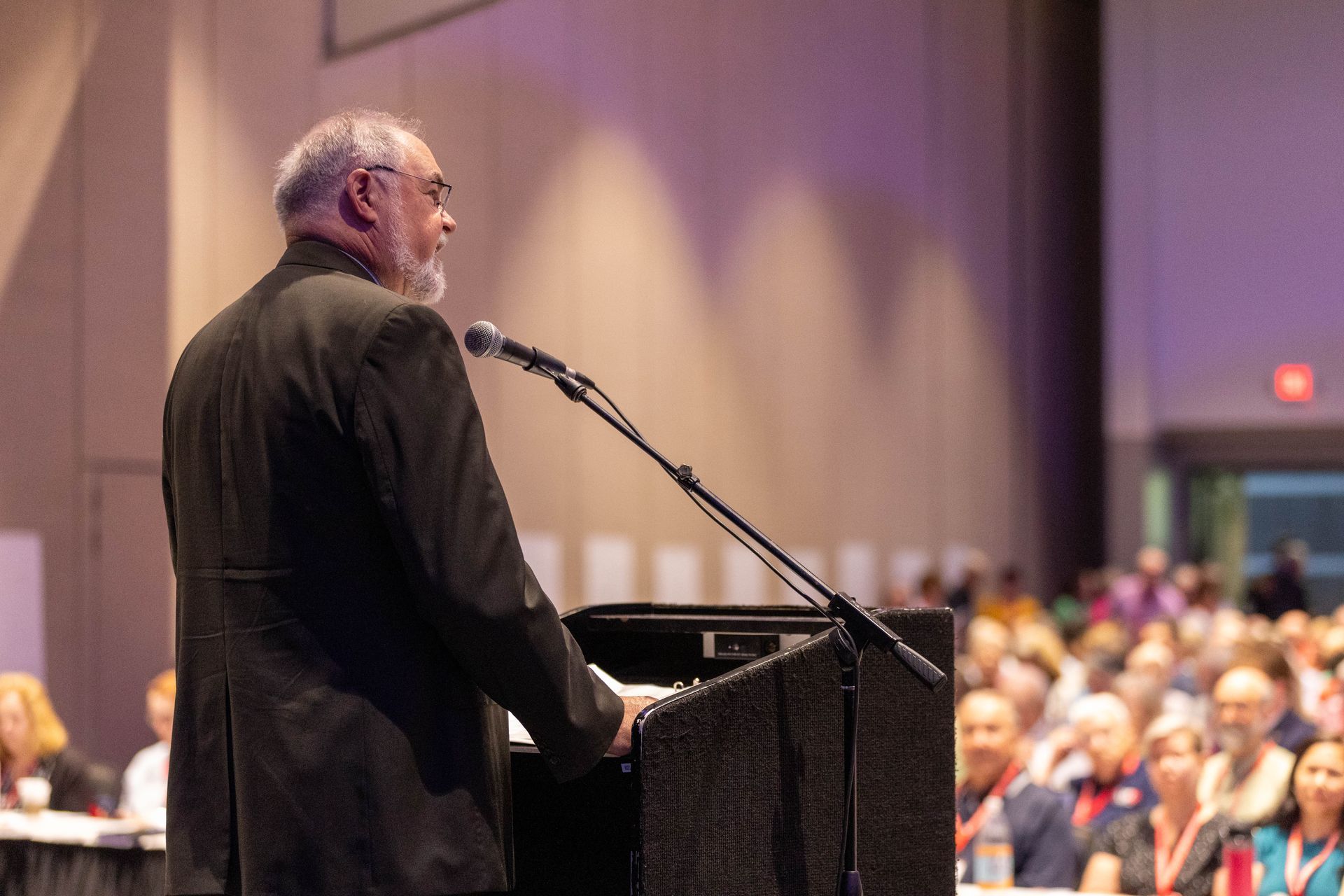
Aldersgate UMC's two Certified Lay Ministers, John Hall and Barbara Atkinson, serve and bless our church in many ways. In this week's and next week's blog posts, we will hear their stories of calling and service. When did you hear a call to become a Certified Lay Minister? What was that call like? My calling to lay ministry occurred in 2012 . One of our longtime members at Aldersgate asked me to help him with rebuilding some of the sound equipment in our sanctuary. He was all about "removing distractions"—providing clear, clean sound with no clicks or buzz or hum. While working on this project, I sensed a nudge, a restlessness. Around that time, I was invited to a breakfast meeting with our District Superintendent. He told me he saw gifts in me and asked me to join a discernment group. This group became the first Certified Lay Ministry cohort for what was then the Durham District, now the Corridor District, of the NC Conference. It was exciting to explore ministry possibilities as a group and have a safe place to openly talk about the role of laity in the United Methodist Church. Through our discussions, we came to understand that Certified Lay Ministry was just one of the many ways that laypeople could serve in important, vital roles in ministry in the local church. Talk about your experience in the training & certification process. How was it? Our formal training was an eight-month group training experience led by a pastor from a neighboring church. We discussed sensing and responding to our call to ministry, the organization and administration of the church, the history of our church, and practical aspects of ministry like preaching, leading worship, and congregational care. Part of the training process was to establish an accountability group, also called a Mutual Ministry Team. This group was made up of three members of Aldersgate, our pastor (who served as my mentor), and our District Superintendent. Together we developed a ministry covenant that described the expectations and responsibilities of our shared ministry for both me and Aldersgate. Following the formal training, I interviewed with our District Committee on Ordained Ministry (dCOM), who affirmed my calling to ministry and provided useful guidance on living into a covenant relationship. I continue to regularly meet with my ministry team to review and make updates to our ministry covenant as needed. Every two years, there’s a formal review process that includes another interview with the dCOM to be sure this ministry is still relevant and useful for all of us. Since becoming a Certified Lay Minister, what have you learned about God? What have you learned about the Church? I’ve learned that God equips the called. God is always busy continuing the creation story, and God prepares, shapes, and empowers us to be a part of what God is doing. I’ve learned we need each other in our journey. I’ve learned that God has expectations of me. Our church embraces the "priesthood of all believers." We believe everyone has a place, everyone is gifted, and everyone is called to use their gifts in the building of God’s Kingdom. There are some specific callings, like Certified Lay Ministry, but there’s a place for every person to explore, discover, and use their gifts. What is the most challenging part and the most rewarding part of being a Certified Lay Minister? Most challenging? The word "Minister" in Certified Lay Minister can be confusing, so I spend a fair amount of time explaining it. That’s not a bad thing, as it usually leads to a more engaging discussion and a better understanding of the role of lay folks in our church. Most rewarding? Being a part of a ministry team that equips and supports me and our ministry. The partnership between clergy and laity takes a lot of work and it’s really important. When it works well, it’s amazing. My ministry team is really good at encouraging me and asking me the right questions to provide guidance and feedback. Creating spaces and places where folks can explore and discover their calling and live it out is deeply rewarding to me. Together, we celebrate the many ways laity serve in important, vital roles in ministry in the local church. The United Methodist Church is somewhat unique in this aspect, providing both formal ways (such as Certified Lay Servant/Speaker/Minister, Deaconess/Home Missioner) as well as less formal ways (such as local church leadership - Church Council, Finance, Missions) and those who labor without recognition or fanfare - like altar guild and choir. All of these, and more, are needed and necessary, and are important in building up the body of the church. The life and work of the Church belong to us all. Read last week's blog post to learn more about lay ministry in the United Methodist Church.
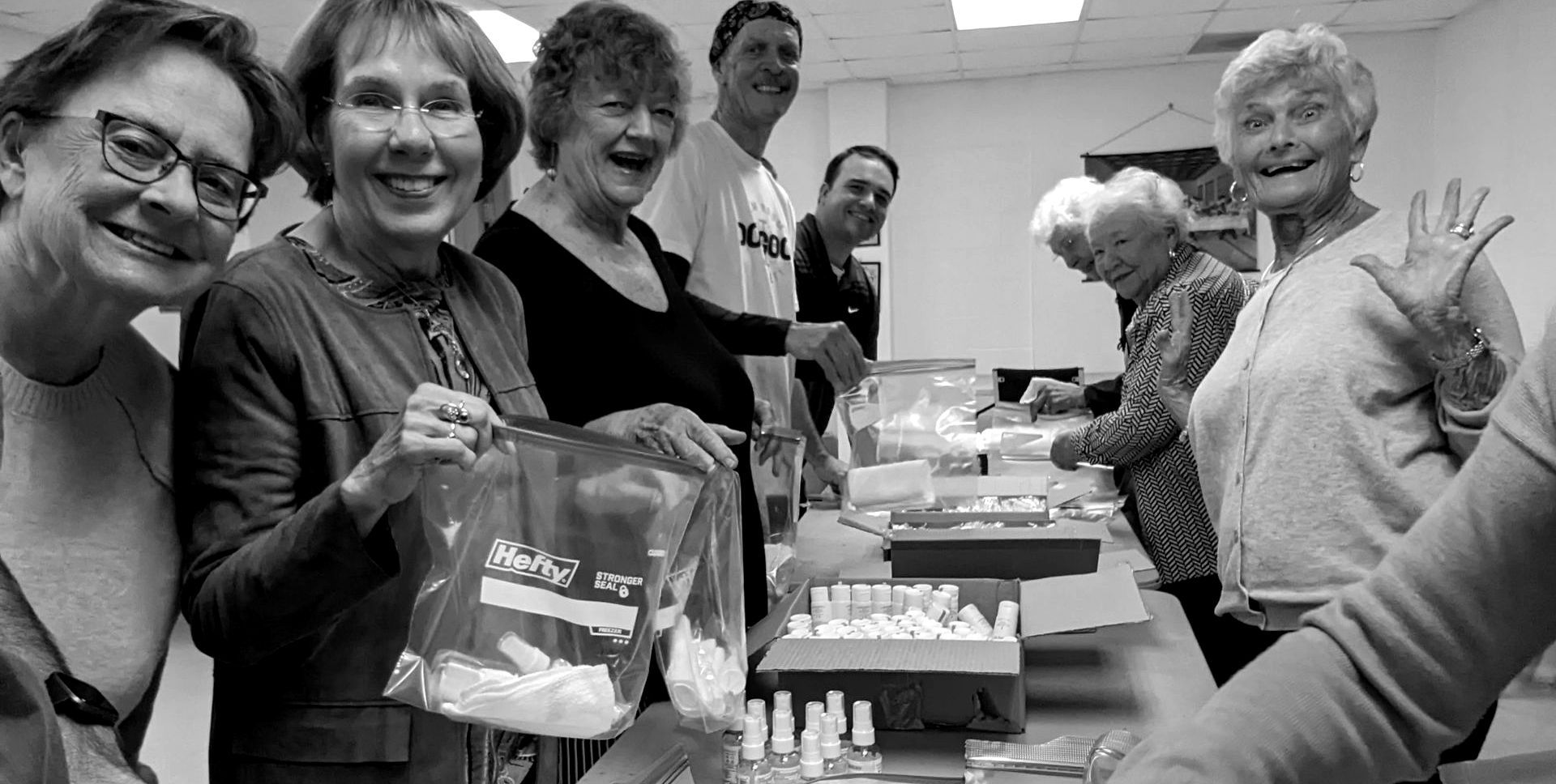
When Christians speak about "calling," many people immediately think of ordained ministry: pastor, priest, deacon, elder, bishop. Words differ across denominations for the people whose vocation is ordination. But, as the Book of Discipline says, "The ministry of clergy and laity is complementary. No minister is subordinate to another." All Christians, lay and ordained, are called to "love the Lord your God with all your heart and with all your soul and with all your mind and with all your strength" (Mark 12:30). For more than 200 years, Methodists have enthusiastically celebrated and encouraged laypeople's ministries. Today, this tradition continues through church structures which are carefully balanced between the clergy and the laity. Laypeople lead many ministries, great and small, within local church contexts, and many options for formal training in lay service are available. For a Christian called to serving the church outside an ordained context, few Christian traditions offer more opportunities to live out your vocation. Have you felt a tug on your heart toward serving the church? Are you unsure of where to start? You are warmly invited to the Lay Servant Ministries Day of Discovery coming up on Saturday, May 31. Until then, explore the resources below, and join us in this prayer. Holy Spirit, we pray for the vocations of all laypeople. Thank you for generously granting spiritual gifts to each one of your children. Please speak to each person, including myself, with clarity and power. Call each of us to love and service in ways that nourish our souls. And by your work, done through our hands, build your holy kingdom here on earth. Amen. GENERAL INFORMATION North Carolina Conference Laity Ministries Resource UMC: Laity Ministry (Website) Lay Servant Ministries Course Descriptions and Equipping Resources (PDF Catalog) BeADisciple Online Courses (Website) SPECIFIC ROLES: A FEW EXAMPLES Certified Lay Minister Certified lay ministers (CLMs) are laity who have answered God’s call on their life through a concrete and long-term commitment to the local church. Some CLMs serve as lay pastors of congregations. Others engage in specific ministry projects in their own local church. All CLMs work as part of a ministry team and under the direct supervision of a licensed or ordained pastor. ( source ) Certified Lay Speaker "The certified lay speaker program exists to train, equip, and support laity who are responding to God’s call through the specialized ministry of preaching." ( source ) Deaconess / Home Missioner "Deaconesses and Home Missioners are laywomen and laymen who are called by God to be in a lifetime relationship in The United Methodist Church for engagement with a full-time vocation in ministries of love, justice, and service." ( source ) Global Missionaries "United Methodist missionaries serve in about 60 different countries in many types of professional careers, including as pastors, evangelists and church coordinators; teachers and educators; doctors, nurses and other health workers; agriculturists; development specialists; community organizers and peacebuilders." ( source )
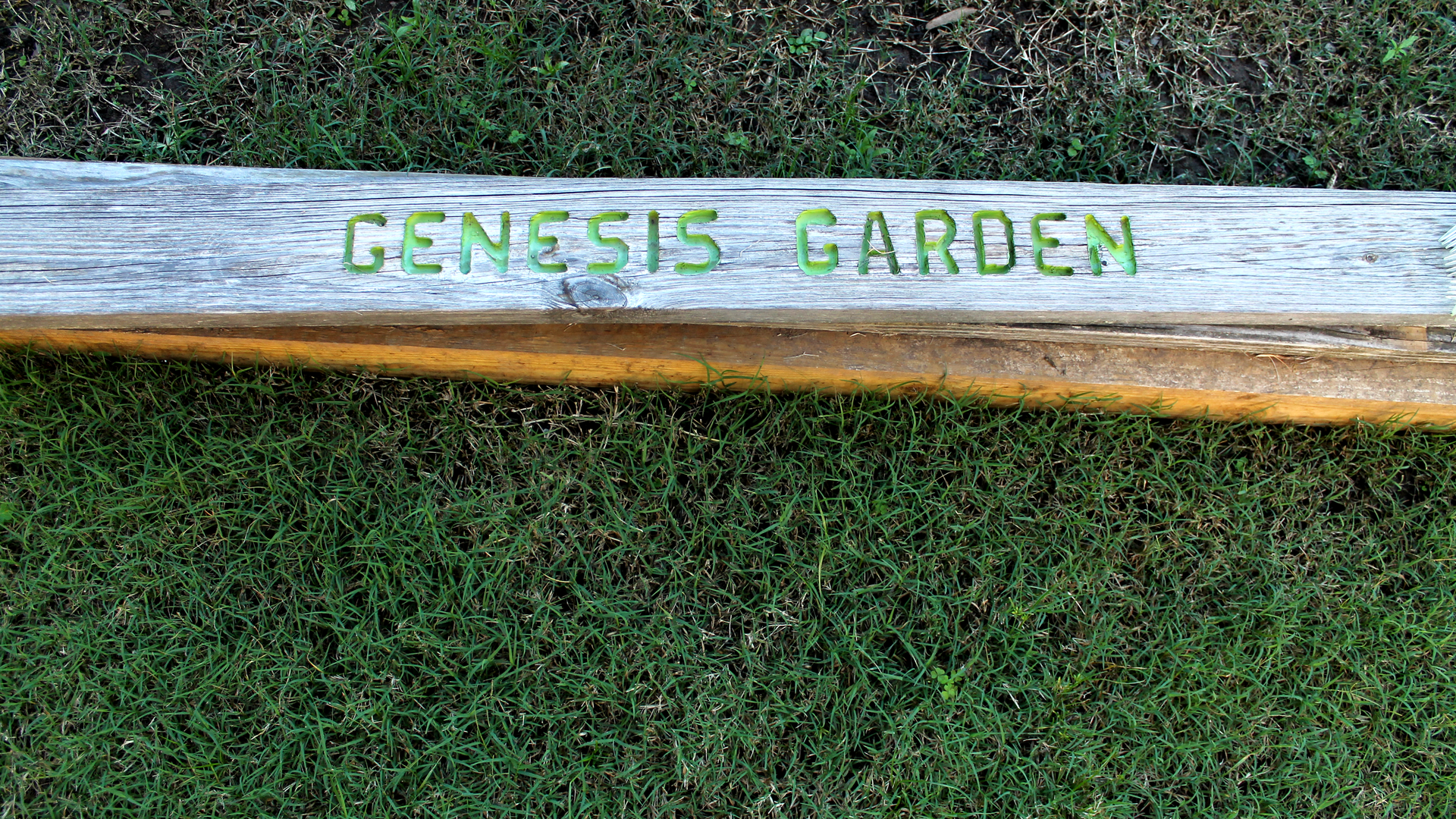
"We grew all our food from the earliest days I can remember," she said. "Dad did the gardening and Mom did the canning." Kitty doesn't grow her own food anymore; her yard doesn't get enough sun. Instead, her lifelong love for gardening blossoms out into the community, feeding the hungry through the Genesis Garden. The Genesis Garden was built in 2016 as an Eagle Scout project through Boy Scout Troop 400, which has met at Aldersgate UMC for decades. The garden fell out of use during COVID. But in 2022, Aldersgate folks Kitty Creery, Regina Whitaker, and Jane Bahor began working to revive the neglected space. Immediately, the garden was blessed with heavy harvests. "In those days Regina and I would walk down the aisles at church before worship started, giving away little bags of cherry tomatoes," Kitty said. In 2023, the harvest became so plentiful that finding a place to donate produce became a challenge. Thankfully, Kitty made a connection with the Durham Rescue Mission. To receive a large quantity of produce, a charitable organization needs adequate refrigerator space and preparation areas. The Durham Rescue Mission location on Alston & Main is equipped to receive the Genesis Garden's produce, which currently averages about 30 pounds per week during growing season. This location, which serves three meals a day to those in need, prepares and serves as much produce as the Genesis Garden can give, and more. The garden doesn't just feed the hungry; it also provides a point of connection between Aldersgate and surrounding neighborhoods. In fact, that's how Kitty and her late husband Pres got involved. As she and Pres took walks around the track during the COVID pandemic, they started to help clear the trail of unwanted overgrowth. Then they noticed the unused garden. Kitty's love of the soil took root, and the rest was history. During growing season—spring, summer and fall—the Genesis Garden is always in need of volunteers and donations. Planting, weeding, watering and delivering all keep the Durham Rescue Mission's refrigerators stocked with produce. In fact, the garden currently has multiple large pots of unused soil just waiting for more volunteers to dig in. Our 2025 yield could significantly increase if more volunteers lent a hand to keep it growing. If gardening feeds your soul, please reach out to us. Let's dig in to God's abundant creation and nourish those in need. If you'd like to help, contact the church office (information in the footer) or email Kitty directly at kwcreery at hotmail dot com.
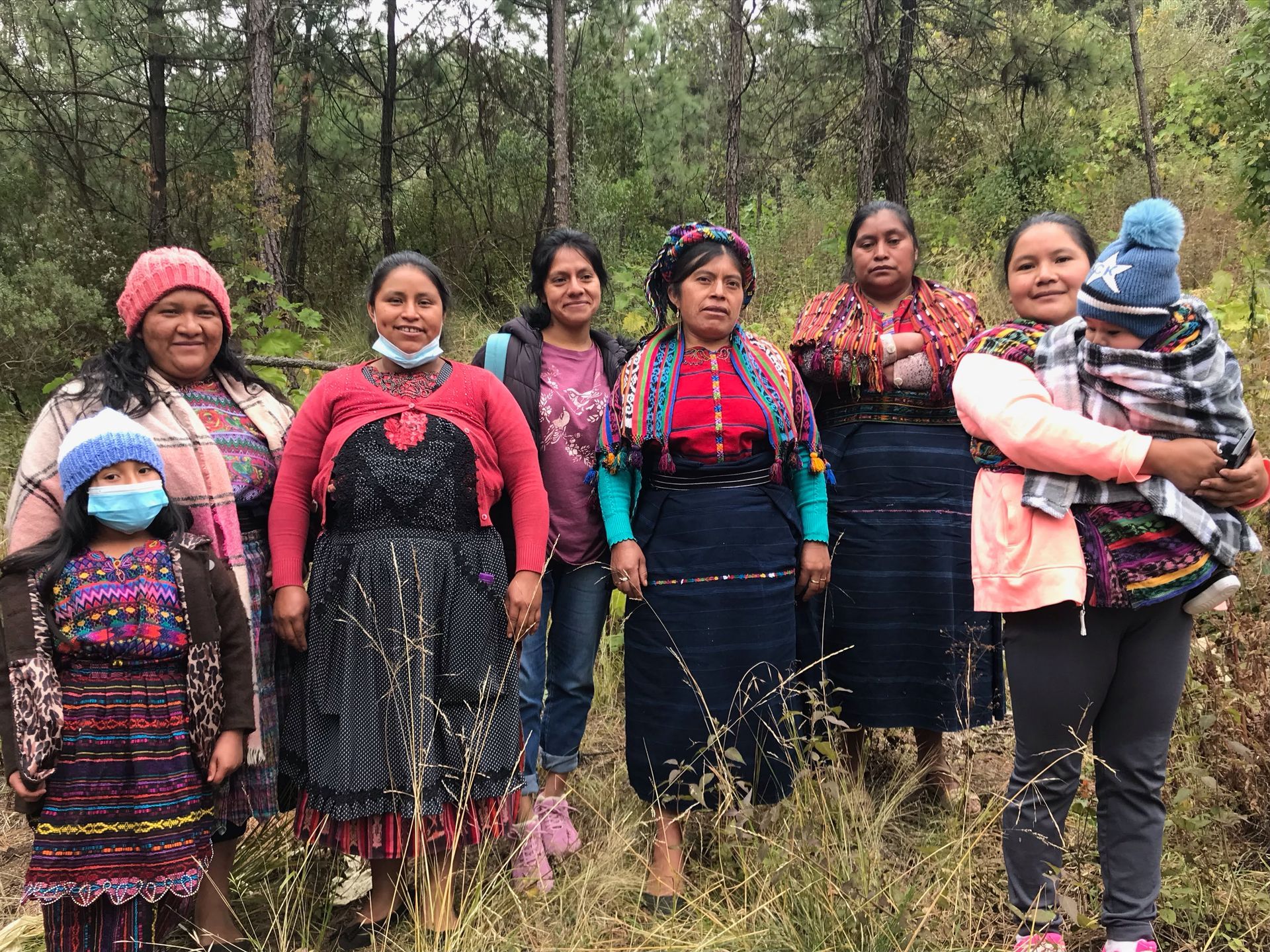
The Mam people have lived in western Guatemala for more than 2,500 years. Descended from ancient Mayan peoples, Mam Maya remain one of Guatemala's many Indigenous people groups. Since the Spanish Conquest, Mam Maya have endured a great number of political, social and economic pressures. Today, more than 600,000 Mam people continue to live in Guatemala's western highlands. Mam, their language, consists of 15 distinct dialects. Spanish is also spoken widely. Many of today's Mam Maya wear traditional clothing, woven and sewn within local communities. Vibrant colors, stripes and geometric patterns abound on long skirts, shawls, infant slings, and other traditional garments. Textile weaving and small-scale agriculture support many Mam communities, which tend to be tight-knit and family-focused. Multiple generations in a family often live in one home and eat together around wood stoves, frequently sharing simple meals of corn tortillas, vegetables, fruit, eggs, and chicken. Mam holidays, which include high points in the Christian year such as Holy Week and Christmas, often feature markets, parades, and marimba music along the streets. Catholic Masses, along with other Christian celebrations like baptism, also mark time among these communities; many of the Mam people are Catholic Christians. Poverty presents an ongoing challenge. Many Mam people work hard to produce food, clothing and supplies for their own family units and communities. Many nonprofits who serve them focus on providing income-generating resources (like chicken flocks and sewing machines) for families' long-term benefit. During Holy Week this year, Aldersgate UMC will lift up the Mam people to our community and request prayers and financial gifts. Stay tuned for more information coming on Palm Sunday. For now, please lift up the Mam Maya in your prayers, as we have done for more than 30 years.
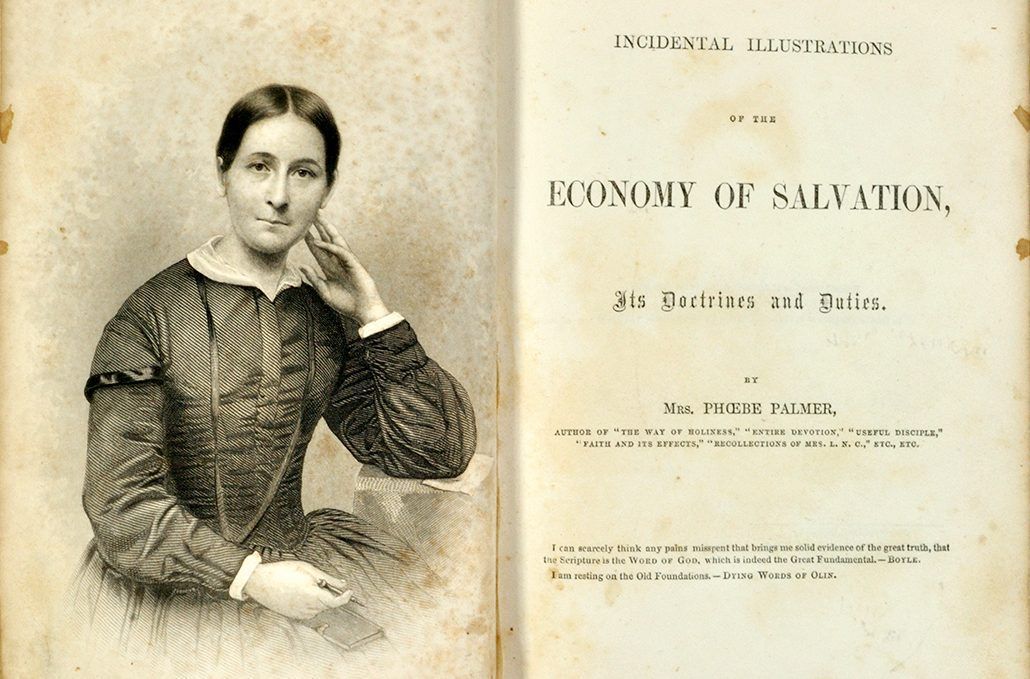
Phoebe Palmer (1807-1874) has been described as the most influential Methodist woman in the 19th century. She has also been called "Mother of the Holiness Movement." John Wesley incorporated holiness into Methodism after he saw it in the Moravians. Wesley believed that holiness, also called "entire sanctification" or "Christian perfection," could be attained in this life. "Christian perfection" means being perfect in love. Phoebe Palmer grew up in a Methodist home. As a teenager, she questioned her faith because even though she knew she was a Christian, she had never had an emotional conversion experience like other Methodists. In 1827 she married Walter Palmer, a homeopathic physician. In 1831 the Palmers moved in with Phoebe's older sister, Sarah Lankford, and her family. Here they learned of the Doctrine of Holiness, and Phoebe herself experienced entire sanctification in a dramatic moment of conversion on July 26, 1837. After this, Phoebe began home prayer meetings for women. These grew larger and were later called "Tuesday Meetings for the Promotion of Holiness." These meetings continued throughout her life. In the 1850s Phoebe and Walter went on mission trips in the eastern United States. They spoke at camp meetings and revivals. In 1867, The National Association for the Promotion of Holiness was created and became the basis for the Palmers' evangelical ministry. In the 1840s Phoebe also became involved in charitable works. She was active in the Ladies' Home Missionary Society and the founder of the Five Points Mission in New York City. Through these organizations she ministered to the poor, orphans, widows, prisoners and freed slaves. In addition to her evangelical and charitable work, Phoebe was a writer. She was editor of the periodical called "The Guide to Holiness." In 1854 she published a book titled The Way of Holiness , the first of six books she would write during her lifetime . Using scripture and logic in her book The Promise of the Father , she advocated for the right of women to speak as ministers. We praise God for the life and ministry of Phoebe Palmer. Image credit: https://worldmethodist.org/phoebe-palmer-and-the-day-of-days/
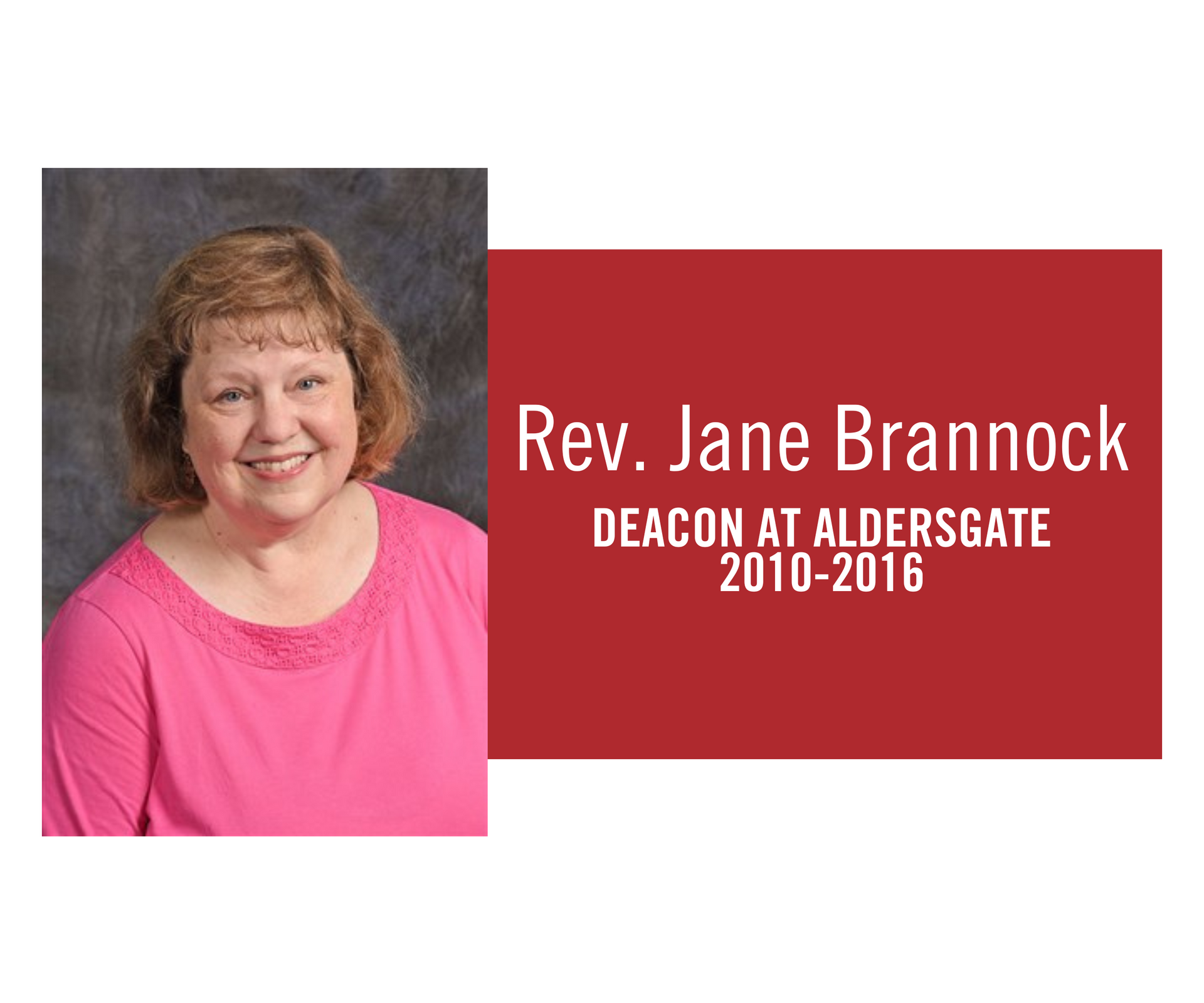
After graduating from college, Jane spent almost eight years working at Davis Library at UNC-Chapel Hill. For six of those years, she led the children's choir at her home church. But in 1990, God began to tug at her heart. "I started going on a quest...but I didn’t have the example of a Christian educator or woman minister," says Jane. Perceiving her calling, Jane's pastor encouraged her to visit Duke Divinity School, even offering to go along. She then connected with the late Margaret Ann Biddle, an accomplished Christian Education minister. That sealed the deal. In August 1991, she quit her job and began her Master of Religious Education at Duke. " It was my biggest leap of faith," she says. Thus began three fruitful decades of ministry. Jane was consecrated a Diaconal Minister in 1994 and ordained Deacon in 1997. She served churches in Goldsboro, Greensboro, Durham, Burlington and Elon. She taught, preached, led, and served. Her work ranged from teaching Vacation Bible School to helping guide a congregation through a complicated building transition & church merger. In 2024, 31 years after graduating from Duke Divinity School, Jane retired from professional ministry. "You really see the best of the church and the worst of the church," she says, "but I never once thought about leaving the UMC. It’s where I belong." Aldersgate was Jane's second-to-last appointment. She remembers us as "people who really have a heart for mission both globally and locally." She remembers a church with something going on every night of the week, a church with a hands-on commitment to service, a church with very active laity. Bustling Wednesday evenings and packed Sunday mornings feature most prominently in her memory. "It was a busy time," she says. "I found it very fun and fulfilling." During her six years here, Jane also observed that Aldersgate is a "neighborhood church." When I told her about our recent book study on The Art of Neighboring , she was not surprised that its message had resonated so well with Aldersgate's people, even today. "Aldersgate had more of a neighborhood feel than any of the other churches I was at," she said. Some things never change! Looking back on Jane's years of service reminds us what God has in store for those who follow his calling. Jane, like the first disciples (Matt. 4:18-22), "left [her] nets and followed Him." She took the leap of faith, and God brought us--and many other churches too--the fruits of her obedience. Are you feeling God tug at your heart? Do you think God is calling you to more? Perhaps Jane's mother's advice from 1991 will encourage you. " When I asked my mom what she thought, she said, 'I think you should have done it a long time ago.'”

John Wesley personally authorized Sarah Mallet to preach in 1787. Helenor M. Davisson became the first ordained Methodist woman in 1866. The Methodist Church granted full clergy rights to women in 1956, the same year Aldersgate UMC was founded in Durham. Like many others , these examples demonstrate Methodism's longstanding commitment to women in leadership. Today, the General Commission on the Status and Role of Women "advocates for full participation of women in the total life of The United Methodist Church." Our church has benefited from the ministry of five women clergy who served Aldersgate a total of 23 years. Since our founding in 1956, two women elders and two women deacons have been appointed to our congregation: Rev. Amanda Riley Smith, Associate Pastor, 2004-2006 Rev. Nanette de Andrade, Deacon, 2009-2018 Rev. Jane Brannock, Deacon, 2010-2016 Rev. Tara Culp Lain, Associate Pastor, 2011-2015 Next week's blog post will feature an interview with Rev. Jane Brannock, who served Aldersgate for six years. Until then, consider how God may be inviting you to participate in Methodism's long history of supporting women in ministry. Perhaps you can: Pray for all women in ministry Write an appreciation note to a woman ministry leader you know and ask how you can support her Learn more about Methodist women's history through the Commission's online resources If you are part of a woman's group, consider doing the UMC's six-session Women Called to Ministry study Let's give thanks together during this Women's History Month for the work God has done through women leaders here at Aldersgate and throughout Methodist history.

Your gift arrives Wednesday, the moment the ashes touch your forehead and Lent begins. Beneath the ashen wrapping, you'll find the gift: forty days of rest. Long ago, God commanded his people to "remember the Sabbath day and keep it holy" (Ex. 20:8). Holy things are set apart, cared for, tended to, honored. When is the last time you set apart time for your soul to rest? When did you last care for your own peace? Could your calendar use some tending? Have you honored your need for play? As we begin this Lenten season, let's sit with those questions. We will journey together through them as a community of disciples during the next 40 days. If you aren't sure where to start, keep reading for ideas on how to start receiving God's surprising gift of rest. Book Recommendations from our Adult Christian Formation Team Keeping the Sabbath Wholly: Ceasing, Resting, Embracing, Feasting by Marva J. Dawn This book invites the reader to experience the wholeness and joy of observing God’s order for life—a rhythm of working six days and setting apart one day for rest, worship, festivity, and relationships. Sabbath: Finding Rest, Renewal, and Delight in Our Busy Lives by Wayne Muller We need not even schedule an entire day each week. Sabbath time can be a Sabbath afternoon, a Sabbath hour, or a Sabbath walk. With wonderful stories, poems, and suggestions for practice, Muller teaches us how we can use this time of sacred rest to refresh our bodies and minds, restore our creativity, and regain our birthright of inner happiness. The Third Day: Living the Resurrection by Tom Berlin, Mark A. Miller Tom Berlin uses his gifts of storytelling and understanding of the Scriptures to connect the reader to the experiences of several individuals around Jesus in his final days, focusing on new life and redemption rather than loss. Beginner Sabbath Practices Not sure where to start? Try these tiny first steps. If you usually have radio/TV on in the background, turn it off for just 20 minutes. Go to your phone settings. Choose one app and turn off push notifications for that app. Set a timer for five minutes. Sit totally still and silent until the timer goes off. Print out this coloring page and listen to calming music or your audio Bible while coloring it in. Go to bed 15 minutes earlier than usual tonight. "A peace which the world cannot give; joy, that no man taketh from you; rest from doubt and fear and sorrow of heart; and love, the beginning of heaven. And are not these for you? Are they not all purchased for you by Him who loved you, and gave himself for you?" John Wesley
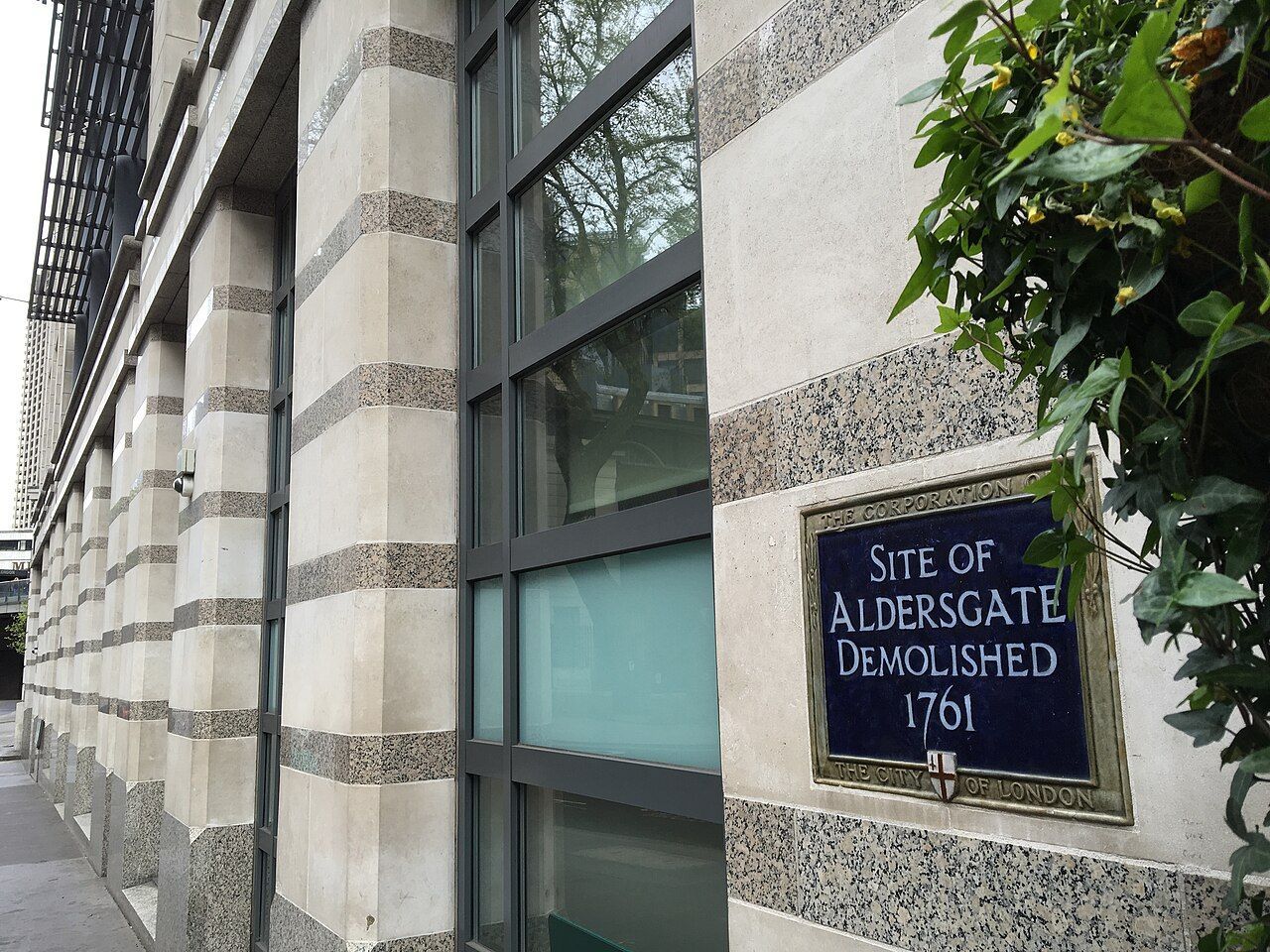
Aldersgate is a tiny neighborhood in London, England, named after one of the city's northern gates in the Middle Ages. Its name first appears in the year 1000 as Ealdredesgate . Like all London neighborhoods, today it elects an "Alderman" to represent its interests in city councils. So why is our Durham, North Carolina church named Aldersgate? On May 24, 1738, Anglican priest John Wesley visited a Moravian church on Aldersgate Street in London. There, he experienced the pivotal moment which birthed the entire Methodist movement. He wrote in his journal: "In the evening I went very unwillingly to a society in Aldersgate Street, where one was reading Luther’s preface to the Epistle to the Romans. About a quarter before nine, while he was describing the change which God works in the heart through faith in Christ, I felt my heart strangely warmed. I felt I did trust in Christ, Christ alone, for salvation; and an assurance was given me that He had taken away my sins, even mine, and saved me from the law of sin and death. I began to pray with all my might for those who had in a more especial manner despitefully used me and persecuted me. I then testified openly to all there what I now first felt in my heart.'" Wesley's experience of grace in a Moravian assembly on Aldersgate Street would one day change the face of global Christianity. 80 million people in 138 countries claimed membership in Wesleyan and Methodist traditions in 2018. The Moravian reading Romans aloud to John Wesley could hardly have known how many people would one day hear the echoes of his voice. So, in thanksgiving for that place, Methodists honor the name Aldersgate. In the United States alone, nearly 100 churches today bear this name, including ours. And this is our prayer: just as the little church on Aldersgate Street warmed John Wesley's heart, may we here at Aldersgate UMC offer warm welcome to all who cross our paths or step within our doors.

